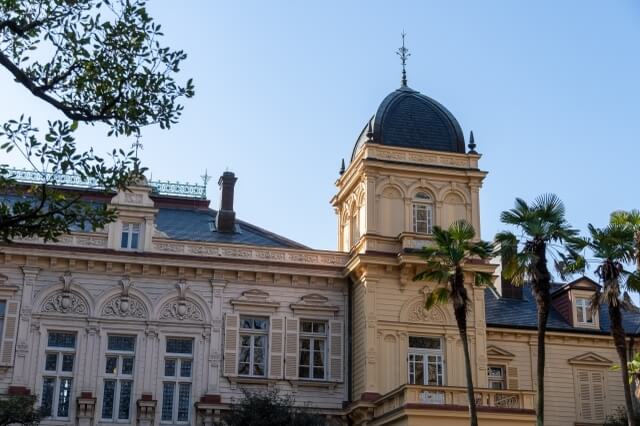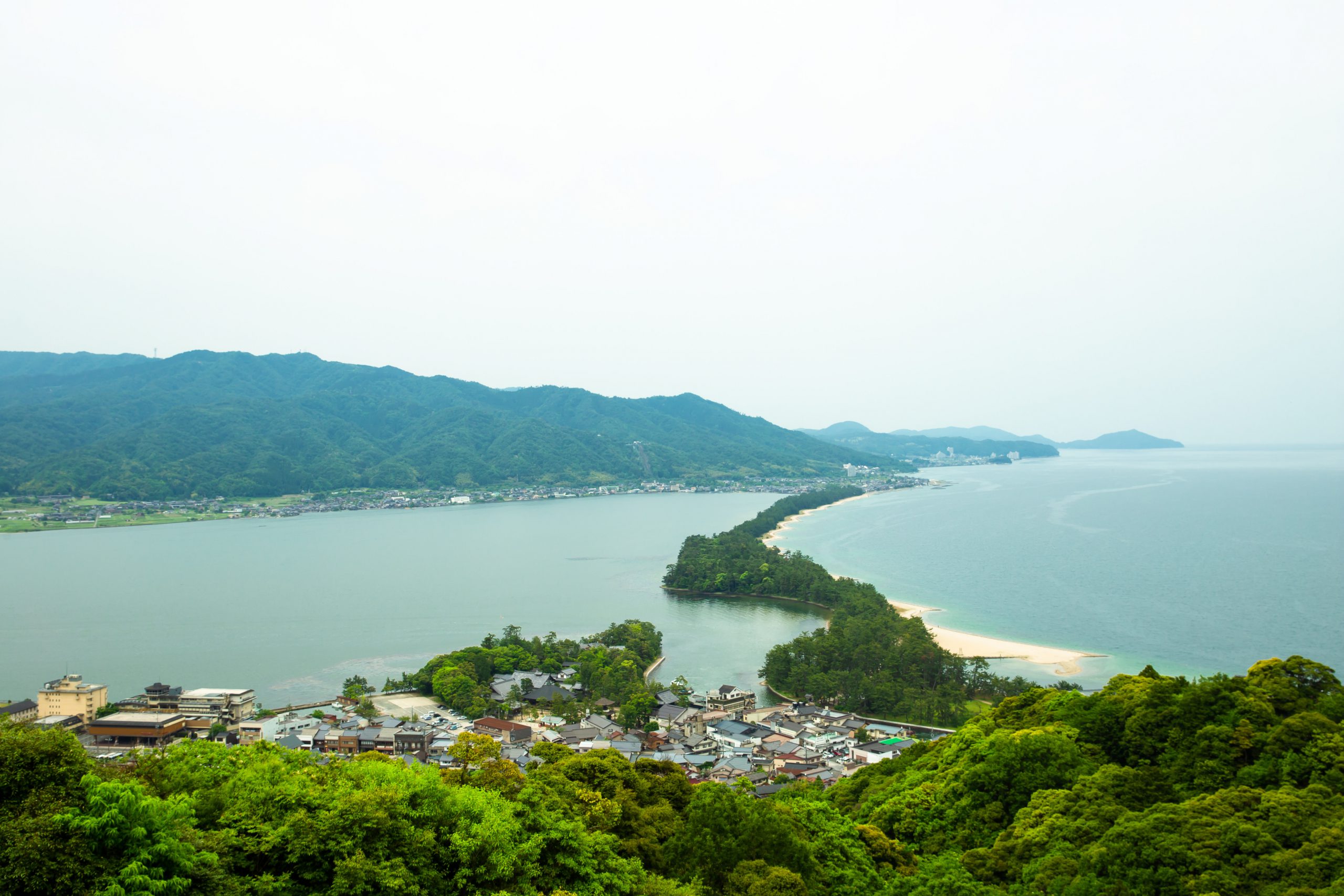As you might know, Japan has a long history which can date back to 20,000 years ago. The entire history generally can be divided into 18 different periods such as Sengoku Period and Edo period depending on the domestic situation and political structures. In this article, we will cover Japan’s modern history which starts in the late 19th, when Japan was in the last years of the Edo period which eventually came to an end in 1868. Here is a brief modern history of Japan from the late Edo period to the present day.
1. Late Edo period (江戸時代後期)
During the Edo period, the Tokugawa family (徳川家) held a great power over the entire Japan. In 1603, they established the Tokugawa shogunate (徳川幕府), a feudal military government which operated as the central political structure through the Edo period. In the 19th century, however, it gradually started to lose its influence. People started to question their strict policies such as heavy taxes, and realized the necessity of a new political structure which could replace the old one.
In 1853, four diplomatic black ships from the U.S arrived at Uraga (浦賀). They are called Kurofune, and were led by Commodore Matthew C. Perry. They required the Tokugawa shogunate to open the nation to the rest of the world and start international trades. After the first arrival of these giant back ships, Japan entered a chaotic period which led to several domestic conflicts and radical movements. Young Samurai such as Sakamoto Ryoma (坂本龍馬) and Takasugi Shinsaku (高杉晋作) were determined to dedicate their lives to defeat the Tokugawa Shogunate, and establish a new government which could protect Japan from invasion by foreign countries.

In 1868, they finally put an end to the Tokugawa Shogunate which had ruled the nations for over 260 years. It is called “the Meiji restoration” (明治維新), which is often seen as a turning point in Japanese history leading to the modernization and westernization in the following Meiji period.
2. Meiji Period (明治時代): 1868-1912
The Meiji Period brought a number of brand-new cultures and experiences to Japan. Aiming to become part of international society, the Meiji government was committed to import western cultures and influence to Japan. They also started to establish new fundamental systems including constitutions, laws, educational systems, nationwide railway networks and much more. In addition, they encouraged citizens to take in western cultures in their daily lives so that they could grow more positive attitudes for accepting western cultures. It totally changed people’s lifestyle and pushed the entire nation toward westernization. In the meantime, traditional Japanese features such as Chonmage(ちょんまげ), a traditional unique hairstyle of Samurai which could be seen everywhere back in the Edo period disappeared.
They also promoted drastic industrialization which could be accomplished by modern technologies and skills imported from the western world. They established a number of government-run factories and plants around the nation. It includes Tomioka Silk Mill (富岡製糸場), which is now designated as a UNESCO World Heritage Site in Gunma prefecture. It enabled them to catch up to the western countries and boost the economic growth. As a result, Japan could successfully become recognized as one of the advanced nations in the world.

During the Meiji period, Japan experienced two big wars which occurred in 1894 and 1904. The Sino-Japanese War started in 1894 and continued until the next year. The Russo-Japanese War was from 1904 through 1905, and Japan won both of the wars. These were the first two international wars that Japan experienced after westernization.
3. Taisho Period (大正時代): 1912-1926
Compared to other modern periods, the Taisho period is relatively short which lasted only 15 years. This period is widely recognized as a turning point of democracy in Japanese history. A number of ordinary people got involved in radical social movements, asking for more freedom and equality in a range of fields and aspects. It included freedom of speech, freedom of religion, freedom of expression and demand for General election law which was finally realized in 1925. Hiratsuka Raicho (平塚らいてう) was a first prominent Japanese feminist who dedicated much of her life as a political activist for women’s rights in Japan.

In 1914, World WarⅠbegan and the whole world entered a chaotic time. It was an international conflict between the Central Powers and the Allies. Japan Participated in the war in accordance with the Anglo-Japanese Alliance which was concluded between the U.K. and Japan in 1902. During the wartime, the European market couldn’t operate properly as it was the main battlefield of the war. It allowed Japan to replace the role and provide a large amount of military supplies to the world, which resulted in the significant economic growth of the Japanese market.
4. Showa Period (昭和): 1926-1989
Showa Period can be divided into two parts: the first part before the WWⅡand the pre-war time after 1945. Until WWⅡcame to an end in 1945, the entire Japan was unified with an absolute concept of Nationalism. It forced people to prioritize the public and sacrifice themselves for the country. This radical idea led to the devastating result of young lives lost in WWⅡ.
After Japan was defeated in WWⅡ, the Allied Powers mainly led by the U.S. started the postwar occupation of Japan. They implemented a series of reforms which included the establishment of a new constitution which officially went into effect in 1947. It stipulates the renunciation of war, which means military aggression is strictly prohibited and Japan will never hold a military power for the purpose of war in the future.

From the 1950’s, Japanese economy saw tremendous growth thanks to the military supply demand caused by the Korean War which broke out in 1950. It enabled Japan to revitalize the devastated economy again, and restore the stable position in the international society as one of the advanced nations.
5. Heisei and Reiwa Period (平成&令和): 1989-2019, 2019-
Although Heisei means Peace, Japan faced a number of difficulties and challenges through this 30-year long period . In 1995, “The Great Hanshin Earthquake” (阪神淡路大震災) occurred and caused devastating damage to the Kansai region. It is estimated that more than 6,000 people have lost their lives from this tragic disaster. About 21 years later, another huge earthquake called “The Great East Japan Earthquake” (東日本大震災) hit the Tohoku region, which has left an unprecedented damage to the affected region.

From 2019, the new era called Reiwa started when Emperor Akihito’s elder son, Naruhito, ascended the throne as the 126th Emperor of Japan.
In Japan, people often use the name of the era for the official documents. For example, 2021 corresponds to 令和3年 (Reiwa 3). If you were born in 1985, it is 昭和60年(Showa 60), and if you were born in 1995, it is 平成7年(Heisei 7).
It’s useful to remember what year it is today and what year you were born if you consider living in Japan.
Japan Wonder Travel Tours
Japan Wonder Travel is a travel agency that offers guided tours throughout Japan.
From private walking tours to delicious Food and Drink tours, we can help you organize the best tours just for you! If you want to explore Japan and learn more about the history and backstories of each area you are visiting, our knowledgeable and friendly English speaking guides will happily take you to the best spots!
In addition, we can provide you with any assistance you may need for your upcoming trip to Japan, so please feel free to contact us if yu have any questions or need some help!
▶Tokyo Tsukiji Fish Market Food and Drink Tour
Explore the most lively and popular fish market in Tokyo and try some of the local’s favorite street foods and sake with one of our friendly and knowledgeable English speaking guides!

▶Tokyo 1–Day Highlights Private Walking Tour (8 Hours)
There’s no better way to explore an area than taking a tour with a knowledgeable local guide. You will have the chance to learn about the history and interesting background stories of Tokyo, as well as discover some hidden gems which can be hard to do without a guide.

▶Mt. Fuji Day Trip Bus Tour from Tokyo
Experience the breathtaking views of Mt. Fuji by visiting the highlights of the area on our guided sightseeing bus tour! Departing from Shinjuku in central Tokyo, you can travel comfortably to all of the best spots in the area by bus.

There is still much more than we can introduce in this blog about Japan’s modern history. Especially from the late Edo to Meiji Period, you can easily find a number of significant events and incidents that have totally changed the way Japanese people’s lives, thought, and how they see their own country from a global perspective. The arrival of western influence allowed them to establish a brand-new nation which successfully incorporated both traditional Japanese and innovative western culture. If you get a chance to visit historical sites associated with Japan’s modern periods during your stay in Japan, remember this article to get the history behind them!
Follow us on Instagram, Facebook and Twitter for more travel inspiration. Or tag us to get featured!
Happy travelling!
Stay informed of the best travel tips to Japan, the most exciting things to do and see, and the top experiences to have with the Japan Wonder Travel Newsletter. Every week we will introduce you to our latest content.
Other articles you might like



This post may contain some affiliate links. When you click through and make a purchase we may receive some commission, at no extra costs to you.


